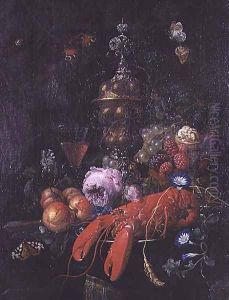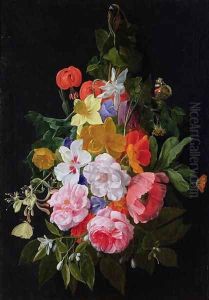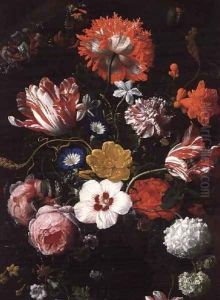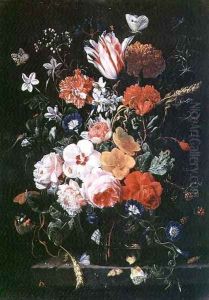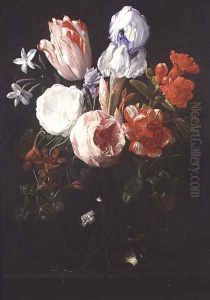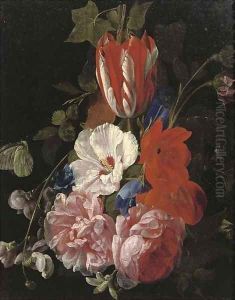Nicholaes van Verendael Paintings
Nicolaes van Verendael was a Flemish painter born in 1640 in Antwerp, a city that was, during his lifetime, a vibrant center for the arts in the Southern Netherlands. His work primarily focused on still lifes, particularly flower pieces, for which he has garnered posthumous recognition. Van Verendael was part of a family of artists, which was not uncommon in the period, and he was deeply embedded in the artistic milieu of Antwerp. His father, Philips van Verendael, was also a painter, although not much is known about his work, suggesting that Nicolaes was the most successful artist in his family.
Van Verendael's artistic career was marked by an exquisite attention to detail, a hallmark of the Flemish still-life tradition. He was particularly adept at capturing the texture and delicacy of flower petals, the translucency of glass, and the intricate patterns of woven baskets, all of which were common elements in his compositions. His paintings are characterized by a vibrant yet harmonious color palette and a masterful use of light and shadow, which gives his floral arrangements a lively, almost ethereal quality.
Unlike many of his contemporaries who traveled extensively to study art or to gain patronage, van Verendael spent most of his life in Antwerp. He became a master in the Guild of Saint Luke, the city's guild for painters, in 1664, an indication of his professional status and the esteem in which he was held by his peers. Despite his focus on still lifes, van Verendael also produced a number of religious works and landscapes, demonstrating his versatility as an artist.
The exact details of van Verendael's life, including his training and personal life, remain somewhat obscure, which is not uncommon for artists of his time. However, it is known that he married Clara Stappaert, with whom he had several children. His legacy is preserved in the collections of major museums around the world, where his works continue to be appreciated for their beauty and technical skill.
Nicolaes van Verendael died in 1691 in Antwerp. His contributions to the Flemish still-life genre have ensured his place in the annals of art history, despite the fact that he is not as widely recognized as some of his contemporaries. Today, his paintings are celebrated for their meticulous detail, luminosity, and the sense of tranquility they evoke, making him an important figure in the study of 17th-century Flemish art.
